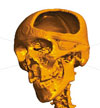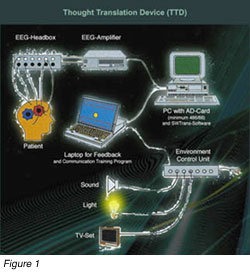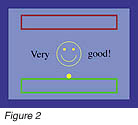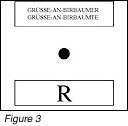|
by Linda LIM

 rain cells communicate by producing tiny electrical impulses that facilitate processes such as thought, memory, consciousness, and emotion. Electroencephalography (EEG), a process that involves placing multiple electrodes on a person's scalp to capture neural signals, detects these impulses as tiny currents. The acquired signals, when amplified and input into a computer for processing, can be translated into messages or commands that reflect a person's intentions and, in essence, has led to brain-computer interface (BCI) research. rain cells communicate by producing tiny electrical impulses that facilitate processes such as thought, memory, consciousness, and emotion. Electroencephalography (EEG), a process that involves placing multiple electrodes on a person's scalp to capture neural signals, detects these impulses as tiny currents. The acquired signals, when amplified and input into a computer for processing, can be translated into messages or commands that reflect a person's intentions and, in essence, has led to brain-computer interface (BCI) research.
BCI, by definition, is a system that allows a person to communicate with or control the external world without involving the brain's normal output pathways. These pathways comprise the specific nerves and muscles associated with such human activity as speech or movement.
Current BCI researchers have done most of their research on patients who are in a so-called locked-in state, such as those who suffer from amyotrophic lateral sclerosis (ALS), in which motor-function nerves in the spinal cord and brain progressively fail until patients end up completely paralysed. Even though they can no longer communicate their needs and feelings, they retain brain function.
 Niels Birbaumer, a neuropsychologist at the University of Tuebingen in Germany and a veteran researcher in BCI, has pioneered and implemented a BCI system called the Thought Translation Device (TTD) - a device that allows patients to use their thoughts to control a word processor (Figure 1). Niels Birbaumer, a neuropsychologist at the University of Tuebingen in Germany and a veteran researcher in BCI, has pioneered and implemented a BCI system called the Thought Translation Device (TTD) - a device that allows patients to use their thoughts to control a word processor (Figure 1).
A patient using the TTD wears a cap that brings electrodes in contact with his or her scalp. The TTD acquires slow cortical potential (SCP) signals, a type of slow voltage change generated in the cerebral cortex picked up by an EEG. With training, an ALS patient can actually learn to generate the appropriate SCP signals to control cursor movements on a notebook computer running word-processing software as part of the TTD device.
 Figure 2 shows how the notebook screen appears during the initial training phase. Patients first train their thoughts to move a cursor into a top- or bottom-highlighted screen goal. If they succeed, a smiley face appears with the message "very good" as positive feedback. Birbaumer and his team do not teach patients how to train their thoughts; they advise patients to watch closely and adopt an approach that works for them. Figure 2 shows how the notebook screen appears during the initial training phase. Patients first train their thoughts to move a cursor into a top- or bottom-highlighted screen goal. If they succeed, a smiley face appears with the message "very good" as positive feedback. Birbaumer and his team do not teach patients how to train their thoughts; they advise patients to watch closely and adopt an approach that works for them.
Birbaumer explains: "Initial patient training requires a team comprising a physicist, a neurologist, and a psychologist concerned with patient learning. Patients may become demotivated in the absence of results, and since the TTD will only do what the patient wants it to do, sometimes we have to adapt the TTD to each individual patient."
 Once patients become sufficiently accurate at this game, they proceed to train on word processor software called the Language Support Program (LSP) in which letters for selection appear in a bottom-located goal and selected letters appear in a top-located goal (Figure 3). Once patients become sufficiently accurate at this game, they proceed to train on word processor software called the Language Support Program (LSP) in which letters for selection appear in a bottom-located goal and selected letters appear in a top-located goal (Figure 3).
Although it may take weeks or months before they learn to control the TTD, ALS patients now have the opportunity to communicate. Three of Birbaumer's patients have in fact learned to write fluently with the TTD.
Birbaumer confides: "Our next goal is to develop a language support system that is faster and easier to use. This will be useful for the millions of patients who are paralysed from brainstem stroke, ALS, or coma.
"To do so, we have to collaborate with people in fields as diverse as neuroscience, psychology, neurology, information processing, computing, and engineering. Interdisciplinary effort is important in BCI research, and a lack of it is not uncommon. Sometimes the neuroscience people separate from the mathematicians or informatics experts."
Apart from the application in communication, another potential use of BCI is as a neuroprosthesis for the partially paralysed - "neuro" because only thoughts are needed to operate a prosthesis. Recently scientists have had success in making a monkey operate a robotic arm via its thoughts. BCI researchers are also interested in a wheelchair for people with total paralysis, and it is in this area that Birbaumer will be working with scientists from the Institute for Infocomm Research (I2R) in Singapore and the Department of Mechanical Engineering at the National University of Singapore. The joint research project will be Asia's first-ever foray into BCI research.
The collaboration envisions an individual controlling his brain blood flow through a BCI system involving functional magnetic resonance imaging in order to manipulate a wheelchair. "Their ideas in using blood flow to develop a wheelchair that you can run with your brain are good," Birbaumer says, referring to the I2R team's research focus.
"Aside from the usual constraints of time, we are actually looking at a very doable task, especially since the I2R team has good computational competence in signal processing and analysis, critical to BCI research."
For more information contact Niels Birbaumer at niels.birbaumer@uni-tuebingen.de
 Click here to download the full issue for USD 6.50 Click here to download the full issue for USD 6.50
|



 rain cells communicate by producing tiny electrical impulses that facilitate processes such as thought, memory, consciousness, and emotion. Electroencephalography (EEG), a process that involves placing multiple electrodes on a person's scalp to capture neural signals, detects these impulses as tiny currents. The acquired signals, when amplified and input into a computer for processing, can be translated into messages or commands that reflect a person's intentions and, in essence, has led to brain-computer interface (BCI) research.
rain cells communicate by producing tiny electrical impulses that facilitate processes such as thought, memory, consciousness, and emotion. Electroencephalography (EEG), a process that involves placing multiple electrodes on a person's scalp to capture neural signals, detects these impulses as tiny currents. The acquired signals, when amplified and input into a computer for processing, can be translated into messages or commands that reflect a person's intentions and, in essence, has led to brain-computer interface (BCI) research.
 Niels Birbaumer, a neuropsychologist at the University of Tuebingen in Germany and a veteran researcher in BCI, has pioneered and implemented a BCI system called the Thought Translation Device (TTD) - a device that allows patients to use their thoughts to control a word processor (Figure 1).
Niels Birbaumer, a neuropsychologist at the University of Tuebingen in Germany and a veteran researcher in BCI, has pioneered and implemented a BCI system called the Thought Translation Device (TTD) - a device that allows patients to use their thoughts to control a word processor (Figure 1).
 Figure 2 shows how the notebook screen appears during the initial training phase. Patients first train their thoughts to move a cursor into a top- or bottom-highlighted screen goal. If they succeed, a smiley face appears with the message "very good" as positive feedback. Birbaumer and his team do not teach patients how to train their thoughts; they advise patients to watch closely and adopt an approach that works for them.
Figure 2 shows how the notebook screen appears during the initial training phase. Patients first train their thoughts to move a cursor into a top- or bottom-highlighted screen goal. If they succeed, a smiley face appears with the message "very good" as positive feedback. Birbaumer and his team do not teach patients how to train their thoughts; they advise patients to watch closely and adopt an approach that works for them.  Once patients become sufficiently accurate at this game, they proceed to train on word processor software called the Language Support Program (LSP) in which letters for selection appear in a bottom-located goal and selected letters appear in a top-located goal (Figure 3).
Once patients become sufficiently accurate at this game, they proceed to train on word processor software called the Language Support Program (LSP) in which letters for selection appear in a bottom-located goal and selected letters appear in a top-located goal (Figure 3).
 Click here to download the full issue for USD 6.50
Click here to download the full issue for USD 6.50